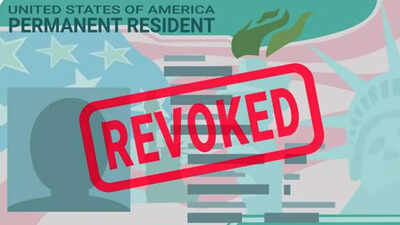Why Trump’s policies are triggering a financial crisis in US higher education

The US higher education system is facing a looming financial crisis, and experts are pointing directly to President Donald Trump’s aggressive policy changes as the cause. From sweeping visa restrictions to funding freezes, Trump’s approach is squeezing nearly every revenue stream that American colleges rely on—just as they try to recover from broader economic disruptions.
As reported by Forbes, these disruptions are forcing colleges to offer less in terms of faculty, research opportunities, and student services while still charging the same—if not more—in tuition and fees. The situation is particularly severe for the vast majority of institutions outside the country’s most elite schools, many of which lack the financial flexibility to navigate these sudden changes.
Visa restrictions and funding freezes choke revenue
One of the most damaging blows comes from the Trump administration’s crackdown on foreign student visas. Many US colleges rely heavily on international students, who often pay full tuition. A decline in enrollment from this group threatens a significant source of revenue. According to Forbes, this is particularly alarming for smaller institutions like Catholic colleges, Christian colleges, women’s colleges, and HBCUs, which serve a broad base of American students and lack deep financial reserves.
Federal funding freezes have compounded the crisis. These freezes are halting research activity, prompting top faculty to leave academia for private industry, and stalling essential maintenance and administrative work. Forbes also noted that uncertainty around the Department of Education’s operations is raising fears that Pell Grants and student loan disbursements could be delayed or interrupted.
Elite schools may raise tuition, others cannot
While a few elite colleges may respond by increasing tuition, this is not a viable option for most. Larry Ladd, a finance advisor at the Association of Governing Boards, told Forbes that even top-tier schools will not recoup the full extent of their financial losses through tuition hikes. At Columbia, for example, only 25% of revenue comes from tuition and fees, and average grant aid is $76,265 for first-year students, leaving little room to maneuver.
Most private nonprofit colleges already discount their tuition significantly—by an average of 56% in 2023, according to Forbes. With the average listed tuition price at $43,350, schools rely on discounts to attract students. As consultant Bob Massa explained to Forbes, any reduction in these discounts could result in enrollment losses, further shrinking revenue.
Costs climb as inflation adds pressure
Rising inflation and tariffs are also taking a toll. As Forbes reported, inflation is reducing the real value of tuition revenue and increasing costs across technology, compensation, and basic services. Colleges are now forced to cut back, merge, or face closure if trends continue.
Ultimately, as Ladd stated to Forbes, the biggest question facing US colleges is whether they can continue to provide the financial aid that students increasingly need. Without that support, access to higher education in America may dramatically decline.





